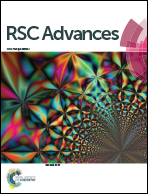The tolerance of growth and clonal propagation of Phragmites australis (common reeds) subjected to lead contamination under elevated CO2 conditions
Abstract
Phragmites australis is a rhizomatous perennial plant with extensive distribution and tolerance. To explore plant growth and clonal propagative tolerance to lead contamination under elevated CO2, they were exposed to combinations of five Pb levels (0, 300, 500, 1500, 3000 mg kg−1) and two CO2 concentrations (380 ± 20 and 760 ± 20 μmol mol−1) in phytotron. Biomass, photosynthetic parameters and rhizome growth were significantly inhibited, while number of axillary shoot buds and daughter apical rhizome shoots were increased by Pb additions. ∼80% of daughter shoots was from daughter axillary shoots, representing a phalanx growth pattern. Under elevated CO2, photosynthetic parameters (excluding stomatal conductance and transpiration rate), growth of clonal modules were increased, facilitating plant biomass accumulation, phalanx growth and spreading strategy. The results suggest that elevated CO2 might improve growth and clonal propagative resistance to Pb contamination through increasing photosynthetic, phalanx growth and population expansion of Phrgagmites australis.


 Please wait while we load your content...
Please wait while we load your content...